Autumn Leaves
Embark on the Timeless Journey of a Musical Masterpiece
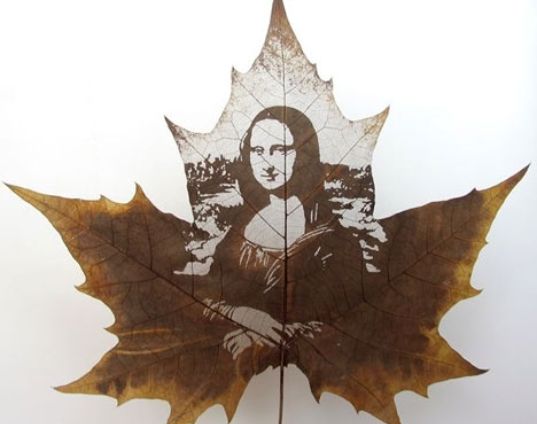
A Treasure Trove of Tunes
This song appears in Volume 1 of the Real Book Software along with thousands of other jazz charts and standards along with original recordings, Band In a Box song files and multi-track MIDIs.
Click here to find out more about this incredible jazz resource.
You can also get several versions of Play Along Backing Tracks for this song, as well as the other songs found in the Real Book Volume 1.
Go Deep!
As a jazz musician, knowing the changes and the melody are obvious requirements. Singers also must know the lyrics. But many an instrumentalist don’t know the words to the song. Knowing the lyrics can really help you to get “inside” the song. That goes for other aspects of the song too. Let’s call it the “song’s biography.” Where did it come from, when did it come about, what were the circumstances or the back story surrounding its creation. What about its journey after it was written. How many recorded versions of it are there?
It is my belief that knowing the answers to those questions, or in other words, the more you know about the song, the better you will be able to render a more inspired performance. It begins to make you an expert on the song (not to mention being a top notch contender on Jeopardy, should you ever get on the show! LOL).
So to that end, let’s dig into one of the most famous and most played jazz standards, regardless of genre.
The Genesis of a Classic
The song, fondly known today as a celebrated jazz standard, was originally crafted by Joseph Kosma in 1945.
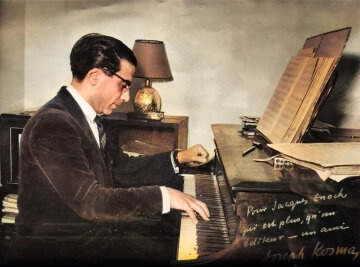
Its birth was marked by Jacques Prévert’s heart-touching lyrics in French, under the title “Les Feuilles mortes” which translates to “The Dead Leaves.”
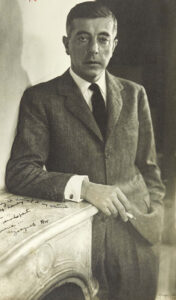
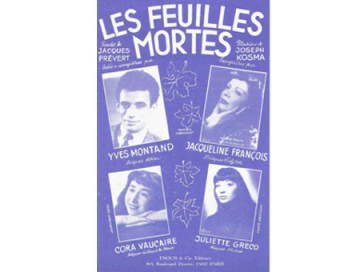
Later, the tune found a new voice in English through the creative prowess of Johnny Mercer.

Ascending the Charts
1955 was a hallmark year for this timeless piece. An instrumental rendition by pianist Roger Williams soared to the pinnacle of the US Billboard charts, leaving a lasting legacy.
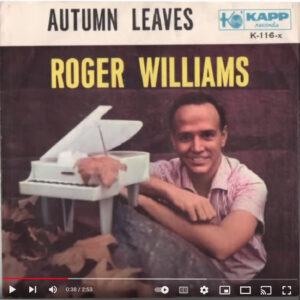

A Collaboration Spanning Borders
Kosma, hailing from Budapest Hungary, formed a remarkable partnership with Prévert in Paris.
This collaboration gave birth to “Les Feuilles mortes,” a song that added charm to the 1946 film “Les Portes de la nuit,“
with memorable performances by Irène Joachim and Yves Montand.
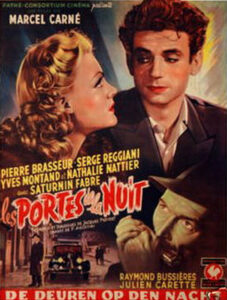
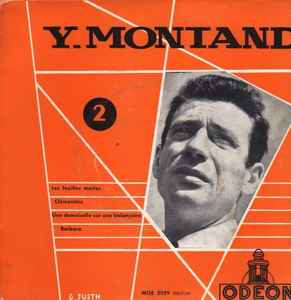
A Printed Tribute
The demise of Jacques Prévert led to the publishing of the song’s heart-touching poem in the 1980 book “Soleil de Nuit,” keeping his memory alive.
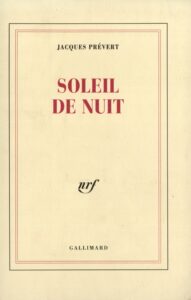
“Soleil de nuit” is a collection of poems by Jacques Prévert, a renowned French poet.
The poems in this collection, often centered around life in Paris and the aftermath of World War II, showcase Prévert’s distinctive style characterized by vivid imagery and emotional depth. Published posthumously in 1980, the poems offer insights into human experiences, love, and society.
The title “Soleil de nuit,” meaning “Sun of the Night,” hints at the contrast and complexity of life, reflecting Prévert’s talent for capturing the essence of ordinary moments.
This collection adds to Prévert’s legacy as a significant figure in French poetry, celebrated for his ability to evoke emotions and contemplation through his verses.
The Melodic Muse
Kosma found his inspiration in “Le Rendez-vous,” a ballet piece designed for Roland Petit, staged in Paris at the close of the Second World War.
Some of the melodies in our celebrated song shares their roots with 1874’s “Poème d’octobre” by Jules Massenet.
Breathing Life into ‘Les Feuilles Mortes’
1950 marked the debut of the first commercial renditions of “Les Feuilles mortes,” immortalized in the recordings of Cora Vaucaire and Yves Montand.

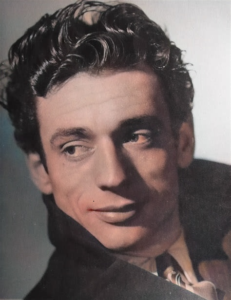
The English Evolution
Johnny Mercer, then a partner in Capitol Records, lent his lyrical prowess to pen the English version of our classic tune.
The first English-language recording was brought to life by Jo Stafford, a Capitol recording artist, in July 1950.
Analyzing the Melody, Harmony, and Structure
This famous jazz standard is found in the Real Book Software Volume 1
This masterpiece’s beauty lies not just in its lyrics but also in its melody and harmonically rich structure. The song follows a 32-bar, AABC form, typical of popular songs and jazz standards. It primarily uses ii-V-I and II-V sequences, common in jazz and popular music, beautifully modulating from the major to the relative minor.
Although it is mostly played in G minor, the original key of the composition was A minor.
It begins with a II-V-I progression in the song’s relative major key (Bb Major, if we’re considering the song in G minor).
This is followed by a II-V-I progression in the song’s tonic minor key (G minor). This pattern repeats throughout the A section of the song.
The B section, meanwhile, explores different harmonic territory. It starts with a IV-VII progression in G minor (Cm7 – F7), followed by a III-VI-II-V progression (Bbmaj7 – Ebmaj7 – Am7b5 – D7). This leads smoothly back to the II-V-I in G minor at the start of the A section when the form repeats.
The cycle of 5ths progression that is used throughout this song occurs in many other jazz standards including “Fly Me to the Moon” and “All the Things You Are.” One unique aspect of this progression is that it contains a ii-V-I progression in both the major key and its relative minor. For example, the first half of the progression clearly outlines G Major while the second half outlines E minor. Therefore, you will frequently see references to “Autumn Leaves” as being in G major/E minor (or B♭ Major/G minor)
The 32-bar AABC form of “Autumn Leaves” is very common in jazz and popular. The A section presents the main musical theme, the B section offers a contrast, and the C section often presents a variation or development of the A section.
The Power of Melodic Expression
The melody of the song matches perfectly with the chord progression, primarily diatonic, which contributes to the song’s pleasing and familiar sound.
It’s a descending sequence that has charmed audiences for decades.
Rhythmic Fluidity
One of the unique aspects of the song is its rhythmic versatility.
The rhythm complements the melody and harmony, adding depth to the listener’s experience.
It has been performed at various tempos, from slow ballads to up-tempo bebop, making it a favorite among musicians across genres.
A Myriad of Interpretations
The timeless appeal of this classic lies in its simple yet profound composition.
It’s a favorite among seasoned jazz musicians and beginners alike, offering a wealth of opportunities for exploration and enjoyment.
The Voices of Autumn Leaves
Over the years, countless artists have added their unique touch to the classic, making it their own.
The list includes legendary artists like Jo Stafford, the first to record the English version,
and Roger Williams, whose instrumental version topped the US Billboard charts.
Each rendition adds a new layer to the song’s rich tapestry,
from Nat King Cole’s smooth vocal style to Eric Clapton’s rock and blues twist.
The song’s adaptability and timeless appeal have made it a beloved standard in the music world.
The Story of Autumn Leaves in Two Languages
The English and French versions of this song, though they share a common melody, each tell a unique story.
The French version, penned by Jacques Prévert, carries a somber, melancholic tone, reminiscing about a past love and the relentless passage of time.
The English version, penned by Johnny Mercer, echoes a similar nostalgia but carries a more wistful feel, focusing more on longing for a past love.
The song remains a timeless expression of longing, memory, and the changing seasons of life, regardless of the version.
Click Here To See the lyrics in both French and English as well as a breakdown analysis of the French phrases.
The Universality of Autumn Leaves
The English and French versions of this song, though they share a common melody, each tell a unique story.
The French version, penned by Jacques Prévert, carries a somber, melancholic tone, reminiscing about a past love and the relentless passage of time.
The English version, penned by Johnny Mercer, echoes a similar nostalgia but carries a more wistful feel, focusing more on longing for a past love.
The song remains a timeless expression of longing, memory, and the changing seasons of life, regardless of the version.
The Song that Bridges Generations
The timeless charm of “Autumn Leaves” has allowed it to cross generational boundaries.
Artists from different eras have left their unique stamp on the song, contributing to its rich and varied discography.
From Chet Baker’s delicate rendition in 1955 to Andrea Bocelli’s emotive performance in 2013, the song continues to inspire and captivate artists and audiences alike.
Lyrics That Speak to the Soul
The song’s lyrics, in both English and French, resonate with listeners on a deep, emotional level.
The English version, penned by Johnny Mercer, paints a vivid picture of falling leaves and a love that was lost, invoking a sense of nostalgia and longing.
The original French version, written by Jacques Prévert, conveys a somber mood, reminiscing about happier times and the inevitability of change.
Both versions, though different in tone, beautifully capture the essence of the song and its timeless appeal.
A Song for All Seasons
While Autumn Leaves is often associated with the fall season, its timeless message and melody resonate throughout the year.
Its captivating lyrics, haunting melody, and rich harmonic structure evoke a range of emotions, making it a fitting soundtrack for all seasons of life.
The Legacy of Autumn Leaves: A Tapestry of Interpretations
Autumn Leaves is more than just a song; it’s a musical journey that transcends time and genre.
Its timeless melody, evocative lyrics, and rich harmonic structure have made it a beloved classic worldwide.
Whether you’re a seasoned musician or a casual listener, Autumn Leaves offers a wealth of musical delight and emotional resonance,
standing as a testament to the enduring power of music.
Let’s delve into an exploration of some various renditions:
This list offers a glimpse into the diverse range of artists who have been drawn to this timeless song, adding their unique interpretation to its enduring legacy.
Yves Montand (1950): He originally performed the song in the film “Les Portes de la nuit.”
Cora Vaucaire (1948): She recorded this early version of “Les Feuilles Mortes”
Roger Williams (1955): Hit the US Billboard charts stratosphere with his instrumental version.
Miles Davis (1958): A memorable instrumental version on his album “Miles Davis in Europe.”
Bill Evans (1959): His haunting rendition is featured on the album “Portrait in Jazz.”
Eva Cassidy (1996): Her heartfelt cover is featured on her album “Songbird.
Edith Piaf (1956): Her version remains popular in France.
Cannonball Adderley (1958): His version with Miles Davis on the album “Somethin’ Else” is a classic example of hard bop jazz.
Paul Desmond With Chet Baker (1974): From the album Together: The Complete Studio Recordings
Frank Sinatra (1957): His version is included in his album “Where Are You?”
Doris Day (1956): She recorded a version of “Autumn Leaves” for her album “Day by Day.”
Bob Dylan (2015): He covered “Autumn Leaves” on his album “Shadows in the Night.”
Diana Krall (2005): She included “Autumn Leaves” in her album “From This Moment On.”
Ahmad Jamal (1958): His version is included in his album ” Live At The Spotlight Club/1958.”
Bing Crosby (1957): His version is in his album “Bing with a Beat.”
McCoy Tyner (1963): His version is included in his album “Today and Tomorrow.”
Joe Pass (1972): He recorded a solo guitar version on his album “Virtuoso No. 4.”
Emmy Rossum (2013): She covered “Autumn Leaves” on her album “Sentimental Journey.”
Richard Clayderman (1993): He recorded a version for his album “Desperado.”
Barney Kessel (1979) from his album “Autumn Leaves”
Jacintha (1999): Her version is from her album “Autumn Leaves: The Songs of Johnny Mercer.”
Jerry Lee Lewis (1958): Known for his energetic performances, rock and roll pioneer Jerry Lee Lewis recorded a unique version of “Autumn Leaves”
Wynton Marsalis (1987): Renowned jazz trumpeter Wynton Marsalis included a rendition on his live album “Marsalis Standard Time, Vol. 1.”
Patricia Barber (2002): Jazz pianist and singer Patricia Barber included an inventive version on her album “Verse.”
Tsuyoshi Yamamoto Trio (1974): The Japanese jazz group Tsuyoshi Yamamoto Trio included a beautiful rendition ” on their album “Midnight Sun”
Art Pepper (1951): Alto saxophonist Art Pepper, a key figure in the cool jazz movement”
Stéphane Grappelli (1991): The French jazz violinist Stéphane Grappelli on his album “Afternoon in Paris”
Ignasi Terraza Trio (2008): This Spanish jazz trio on their album “In a Sentimental Groove.”
Steve Kuhn Trio (1998) – From his “Love Walked In” Album
Michel Petrucciani (1985) “Cold Blues” is an album by the renowned French jazz pianist, and bassist Ron McClure.
Jim Hall · Ron Carter (1973) From the live album “Alone Together.”
Kenny Burrell (1991) His rendition of “Autumn Leaves” is a well-known performance in the jazz guitar world. From the “Sunup To Sundown” album.
Conclusion
Autumn Leaves has been performed and recorded by countless artists across various genres.
This timeless piece has inspired a rich tapestry of interpretations, each adding a unique thread to its enduring legacy.
Philippe Baudoin, a Jazz historian has referred to the song as “the most important non-American standard.”
He notes that “it has been recorded about 1400 times by mainstream and modern jazz musicians alone and is the eighth most-recorded tune by jazzmen.”
Not to mention thousands of other versions by non-jazzers.


